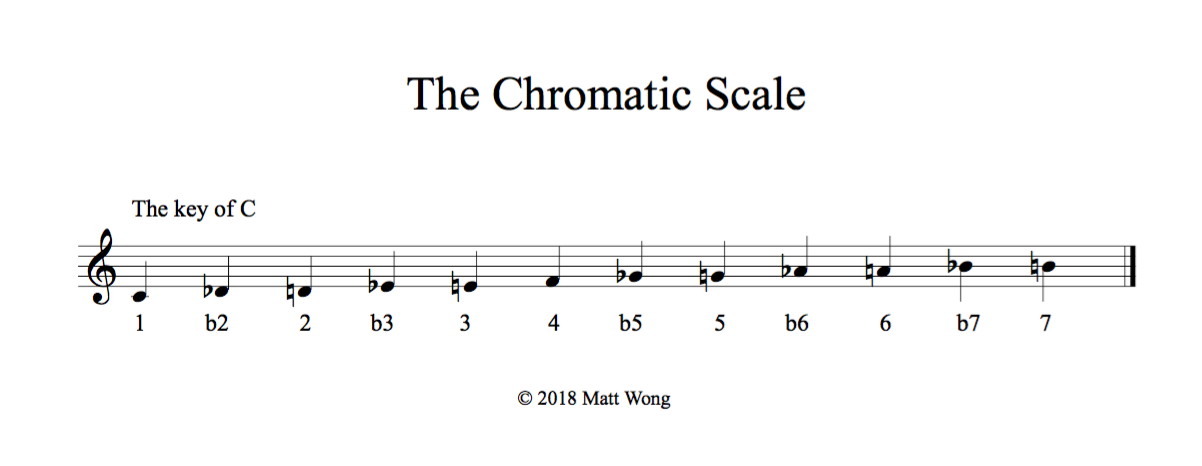
Ear training is one of my favorite topics to work on with my students, and many of the best guitar players of all time learned to play through listening.
I once heard a guitarist say “if you can hear what’s happening, that unlocks the mystery of music.” Here is a lesson that explores how to listen to music in context, complete with two exercises to get you started. The exercises in this lesson are the first steps of a comprehensive ear training method called “Contextual Ear Training,” designed by my teacher Bruce Arnold, who studied with legendary jazz educator Charlie Banacos. The principle behind this method of ear training is to learn to accurately hear individual pitches by memorizing the unique sound of all 12 notes in western music against a key center through identification and singing.
This is a different approach from the traditional “interval training” method where you learn the sound of all the possible intervals in music. As a student of both methods, contextual ear training has proven to be the more effective method for me. In addition to using what I have learned on a daily basis as a musician, contextual ear training has given me a strong foundation to explore music at a deeper level.
Before we get started, there are a few things I would like to mention about these exercises. First, please be patient. It took me a little over a year to be able to identify and sing all 12 pitches. You might become proficient with these exercises faster than I did, or it might take you a little longer, but regardless, it’s important to be patient. You will undoubtedly notice gradual improvement over time, but this requires consistent practice. Therefore, I recommend working through each exercise three times a day, and spending five minutes per session on each exercise. If you are able to, find a friend to work on these exercises with you, and quiz each other periodically to measure your progress. Finally, I encourage you to get in touch with me if you have any questions, or want to discuss your progress.
In addition, because we are learning to hear music in relation to key centers, I recommend that you become familiar with the chromatic scale starting on different roots, and practice naming each of the 12 pitches by both by their note names (C, Db, D, etc.) and by their scale degrees (1, b2, 2, etc.) in relation to the root that you started on.

1. Identify pitches based on their relationship to a key center.
Play a I IV V I chord progression in the key of C (C – F – G – C) on the piano to establish the key center in your ear. Then while the sound of the key is fresh in your ear, play a random note on the piano, and guess the name of the note by identifying its scale degree in relation to the key of C. Do this with each of the 12 notes of the chromatic scale. When guessing, try to guess the note name immediately, and not overthink. This will teach your brain to react instantly to the music, which is what needs to happen when you are at a gig. Pro tip: say the note name out loud when practicing.
2. Sing pitches against a key center.
Pick one of the 12 scale degrees of the chromatic scale to sing (ie. the root). Then, play a I IV V I chord progression in any key on the piano. While the sound of the key is fresh in your ear, sing the note that would function as the scale degree that you picked in that particular key. For example, if you are practicing singing 3rds, and play a progression in G (G – C – D – G), the correct pitch would be B, and you should sing what you think that sounds like. After you can correctly sing that particular scale degree across all 12 major and minor keys, (a minor progression would be i iv V i) pick a different scale degree and repeat this process until you can sing all 12 accurately in all keys. I recommend working through the pitches in the following order – root, 3rd, 5th, 7th, 2nd, 4th, 6th, b2, b3, b5, b6, b7. Like the previous exercise, try to sing the notes immediately, and not overthink.
Helpful Resources:
One Note Ear Training
Contextual Ear Training
Matt Wong is a guitarist, composer, and producer from New Jersey. A big fan of musical theatre, Matt plays in pit orchestras for productions in New York City as well as regionally. In addition, Matt is a session musician, and has recorded guitar, mandolin, and banjo for artists in the US, and abroad (UK, Canada, Spain, and Israel). As an instructor, Matt teaches guitar, music theory, ear training, and improvisation, and offers lessons online via Skype. Follow Matt on Instagram (@mattwongguitar).
Get The Pick Newsletter
All the latest guitar news, interviews, lessons, reviews, deals and more, direct to your inbox!









